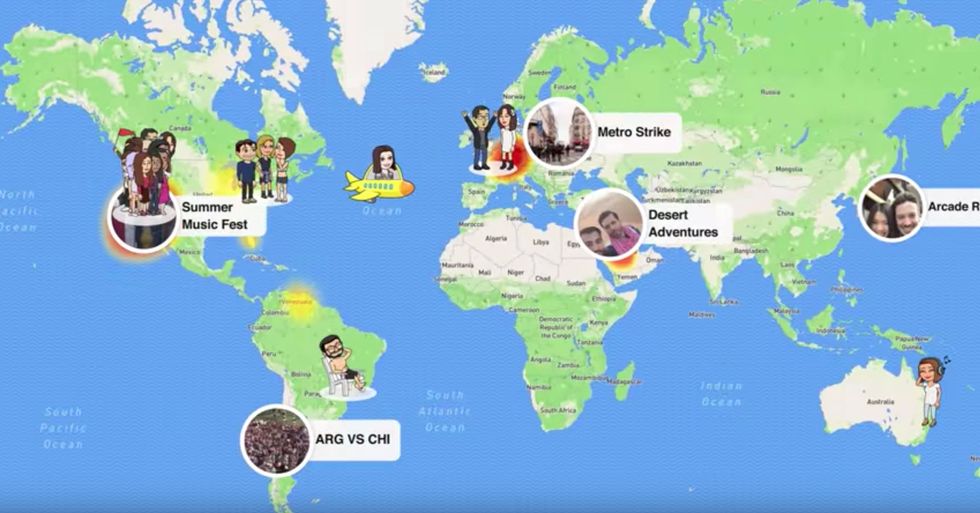As many of you may have heard, the new Snapchat update, called Snap Map, was released to the public earlier this week.
On its face, the new feature seems to be really interesting and exciting (to me at least). You can see where all of your friends on Snapchat are at in real time, watch the stories anyone can post to Our Story, see what's happening around your location as well as the world, and much more.
However, I immediately noticed how precise the Bitmojis corresponding to users appeared on the map - and how that can be easily utilized to stalk users on Snapchat. For one, if a user is using Snapchat while at home, the map automatically updates your location on Snap Map, which means that any of your not-so-close friends can discern where you live if they're paying attention. Not to mention after some time they can learn your daily patterns - when you leave the house, when you return home, where you go when you're gone, etc. A user's Bitmoji also changes its appearance to match what users may be doing. For instance, if Snapchat detects you're riding in a car, your Bitmoji will appear to be riding in a yellow car; if you're listening to music, your Bitmoji will have headphones on as well, etc.
Now I don't know about you, but to me that's really unsettling.
Of course, I'm sure that wasn't the intended purpose of the new Snap Map feature, but it's highly likely that some Snapchat users will use it as a tool to stalk other users.
However, maybe Snapchat did anticipate such malicious use of this new feature. In the Snap Map settings, users can set their Bitmoji and corresponding location services to Ghost Mode, which prevents your friends from seeing your location. Also, similar to the Snap Story privacy feature, users can specify which specific users they don't want seeing their location, while still allowing the friends they want to see their location. Both of these features provide some sort of protection of privacy but limit how you can utilize the new Snap Map feature.
In any case, Snap Map is an interesting addition to Snapchat - users just have to decide how visible they want to appear to their friends and understand the privacy costs that come with their decision.









































